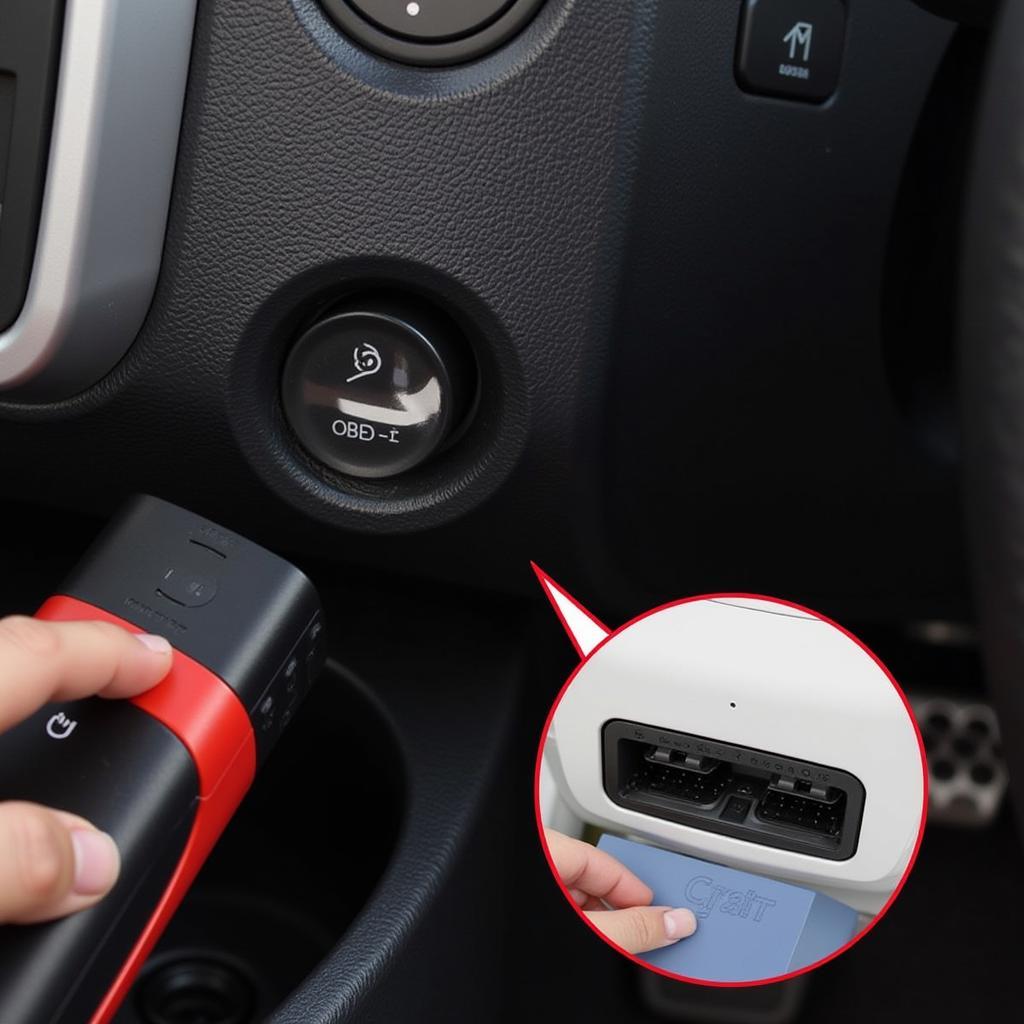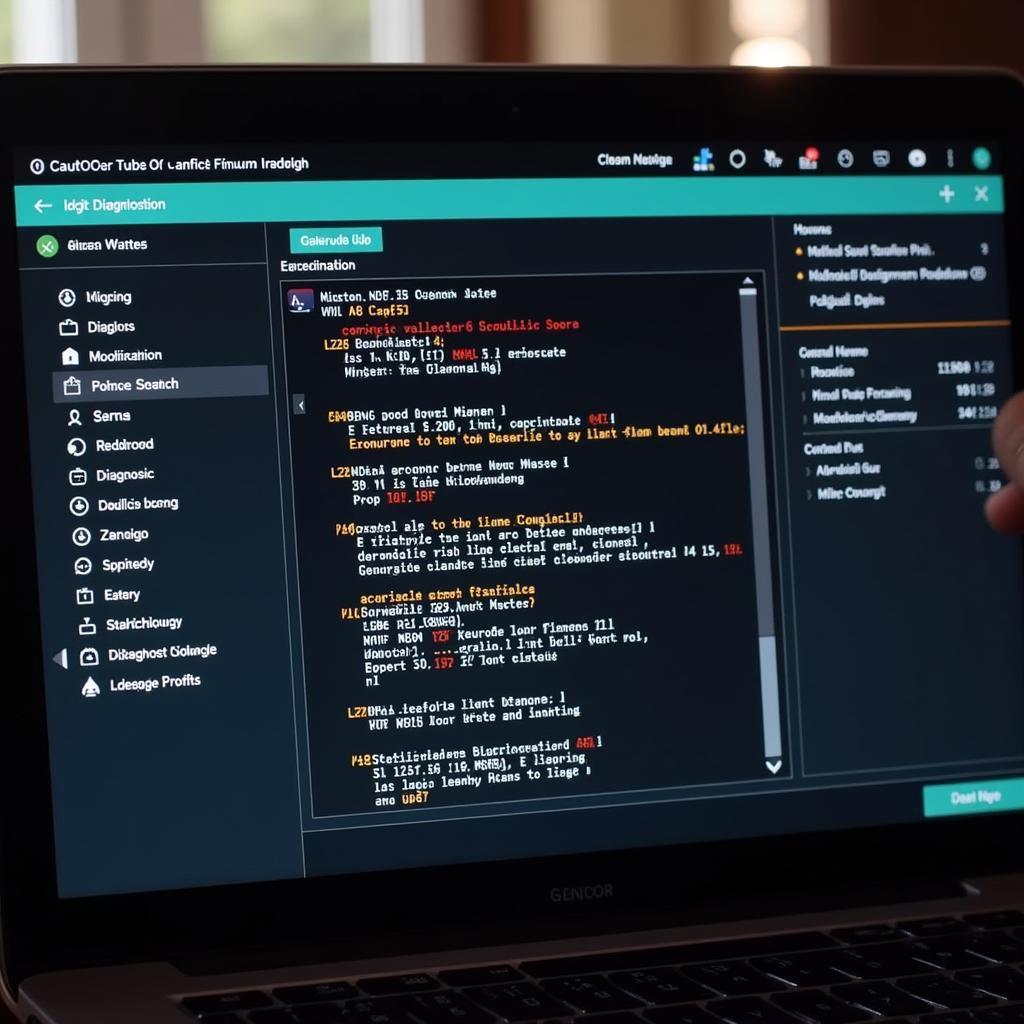Owning a Nissan Micra is a joy, but like any vehicle, it requires regular maintenance and occasional troubleshooting. A Micra Car Diagnostic Check is a crucial part of this process, helping you pinpoint issues before they escalate into costly repairs. But what exactly is involved in a diagnostic check for your Micra, and when should you seek one out?
Understanding the Micra Car Diagnostic Check
A diagnostic check for your Micra involves plugging a specialized scanner into your vehicle’s onboard computer, also known as the Engine Control Unit (ECU). This scanner acts as a decoder, translating the data stored in your ECU into readable information about your Micra’s health.
 Nissan Micra Diagnostic Port
Nissan Micra Diagnostic Port
This information can reveal a range of potential issues, from minor sensor malfunctions to more serious engine or transmission problems. Think of it as a health check for your car, providing valuable insights to keep your Micra running smoothly.
When Does Your Micra Need a Diagnostic Check?
While regular servicing is important, there are specific signs your Micra might be telling you it’s time for a diagnostic check:
- Illuminated Warning Lights: The most obvious sign, a glowing “check engine” light, or any other dashboard warning light, signals that the ECU has detected an issue.
- Performance Problems: Experiencing sluggish acceleration, rough idling, decreased fuel efficiency, or strange noises? These could all point to underlying issues best diagnosed with a scan.
- Post-Accident Check: Even a minor fender bender can disrupt your car’s systems. A diagnostic check after an accident can ensure everything is functioning correctly.
- Pre-Purchase Inspection: Considering buying a used Micra? A diagnostic check is a must to uncover any hidden problems before you commit.
The Benefits of a Micra Car Diagnostic Check
- Early Detection: Identifying problems early often means simpler, less expensive repairs.
- Accurate Diagnosis: No more guessing games. A diagnostic check provides precise information, saving you time and potentially unnecessary repairs.
- Peace of Mind: Knowing the state of your Micra’s health gives you confidence and peace of mind on the road.
What to Expect During a Diagnostic Check
- Connection: The technician connects the scanner to your Micra’s OBD-II port, usually located under the dashboard on the driver’s side.
- Data Retrieval: The scanner retrieves error codes and data stored in your Micra’s ECU.
- Analysis: The technician analyzes the codes and data, identifying the root cause of the problem.
- Explanation: You receive a clear explanation of the issue, along with recommended solutions and repair costs.
 Micra Diagnostic Software
Micra Diagnostic Software
DIY vs. Professional Micra Diagnostic Check
While affordable OBD-II scanners are available for personal use, they might not provide the depth of information or expert interpretation that a professional mechanic can offer, especially for more complex issues.
“It’s tempting to go the DIY route,” says Master Technician, James O’Connell, “but remember, a professional diagnostic check isn’t just about reading codes; it’s about understanding the nuances of your specific Micra model and leveraging years of experience to provide the most accurate diagnosis.”
Keeping Your Micra Healthy
Regular Micra car diagnostic checks, along with scheduled maintenance, are your best defense against unexpected breakdowns and costly repairs. By staying proactive and addressing potential problems early, you can enjoy many miles of worry-free driving in your Nissan Micra.
Need help with a Micra car diagnostic check? Contact us via WhatsApp: +1(641)206-8880, or email: [email protected]. Our 24/7 customer support team is here to assist you.

Leave a Reply